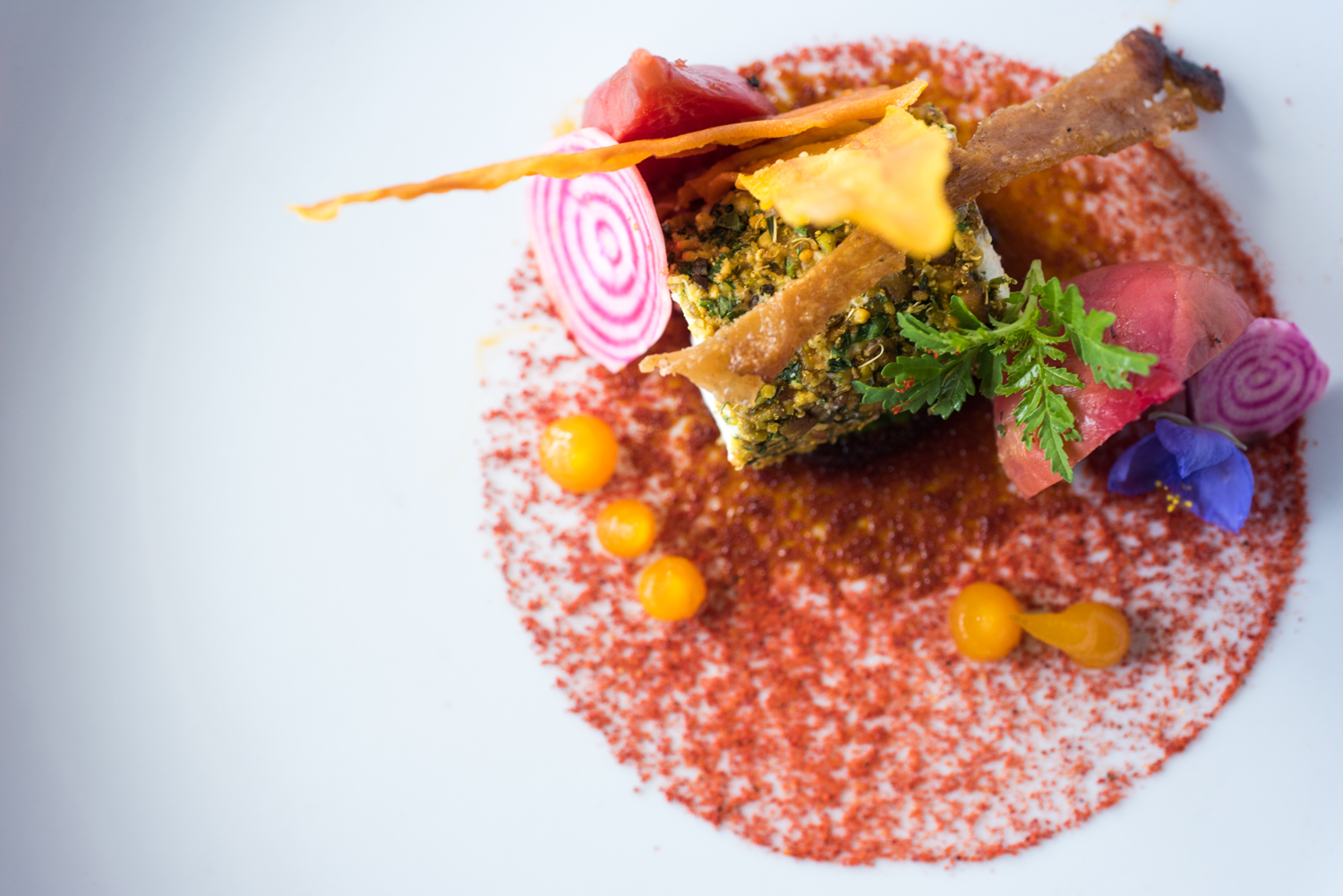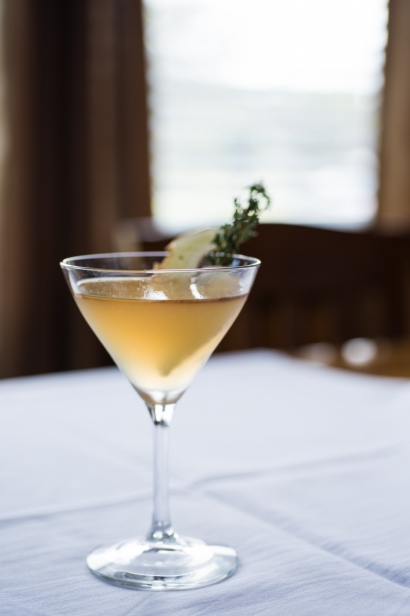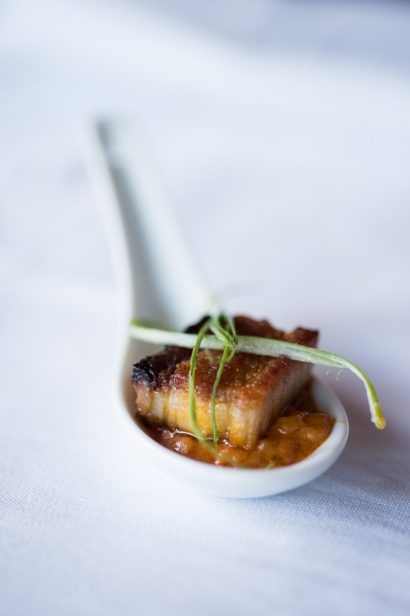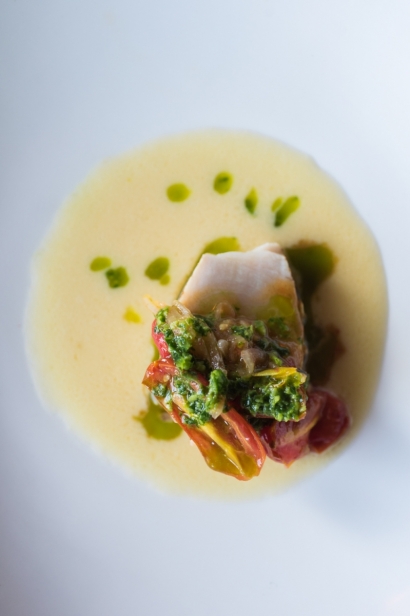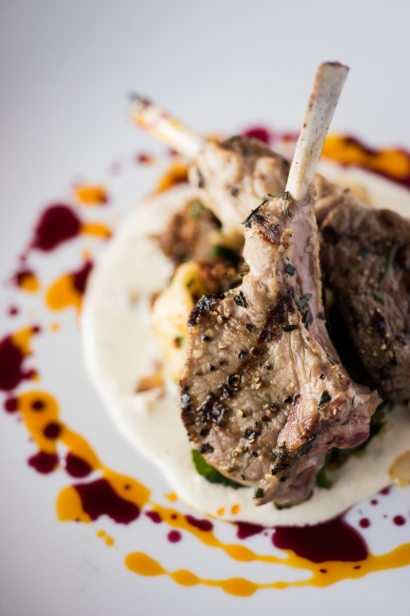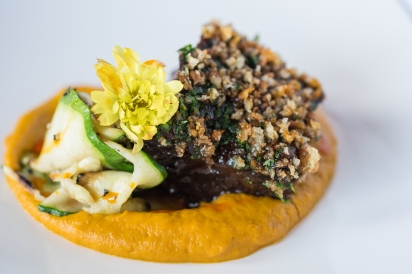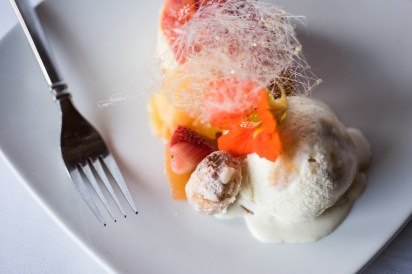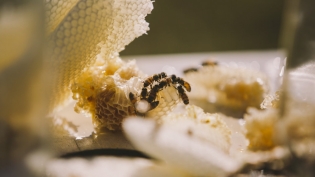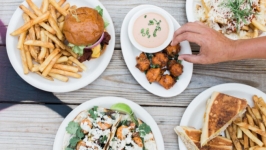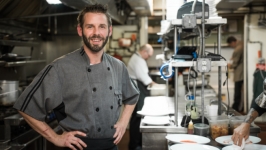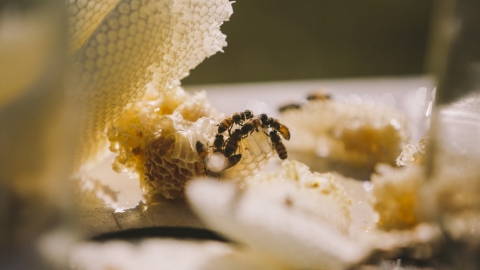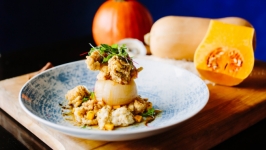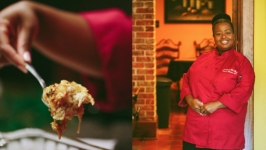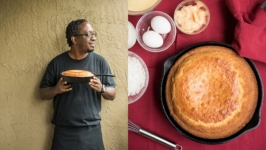Center of the Plate: Honey
Executive Chef Matthew Brown had just finished planning the menu for The Honig Wines dinner at Blackfly Restaurant when Nick Massie, the restaurant’s general manager, off-handedly mentioned the winery's beekeeping activity at their vineyard in California. Little did he know, Massie had ignited a culinary spark.
Inspired by the bees and Honig's hives, Chef Brown immediately threw out his inital menu plan and "reworked the entire meal to incorporate different varieties of honey, adding another flavor profile to complement each wine.”
This may have been extreme -- were it not for the importance of honey at the winery itself.
Honig Wines in Napa Valley has become known as a leader for sustainability in wine production, both at the vineyard and the winery. Michael Honig, grandson of the winery’s founder, helped write the Wine Institute Code of Sustainable Winegrowing Practices, and Honig was one of the first California wineries to earn the Certified California Sustainable Winegrowing certification. One benefit of these sustainable farming practices has been the profusion of bees, butterflies and other beneficial insects it's helped cultivate, and given the favorable conditions, beekeeping has become an additional activity at the vineyard. What's more, the name Honig literally means honey in German, so perhaps it was an inevitable evolution.
Since every kind of honey has a unique terroir, or characteristic taste based on the environment in which it is harvested, Chef Brown was not able to simply replace sugar with honey. He researched flavor profiles of each honey as a starting point to pair with other ingredients in the proposed dishes. The second course, coriander dusted wahoo, was accompanied by local heirloom tomatoes stewed in honey. “I wanted to enhance the bright acidic flavor of the tomatoes,” said Brown. “And given the high fructose content of the tomatoes, tupelo honey seemed like a perfect match, since it also has a high fructose level (higher than other types of honey).”
Tupelo honey originates from the tupelo tree, which grows in southern Georgia and along Florida’s Panhandle. These trees only flower about 2 weeks every year, and the process to extract this honey is very labor-intensive; the honey needs to be collected almost immediately so that it doesn’t get mixed with honey from other plants the bees may visit. The high fructose content causes tupelo honey to granulate slowly, and it is one of the only types of honey diabetics can eat.
To accompany the lamb chops course, Chef Brown planned a gastrique, a sauce that would bring out the assertive flavors and saltiness of the meat. This sweet-sour sauce is usually made by caramelizing sugar then combining that with equal parts vinegar, and reducing it to make a tart, slightly thickened syrup. The chef wanted hints of honey that would elevate the flavor of the blackberries used in his sauce, and also the berry flavor of the Honig Cabernet Sauvignon being paired with the dish, so he chose a wild berry honey from his supplier in Georgia.
The final course, Waygu beef short ribs, included a chai-spiced wildflower honey-glazed carrot puree. “Chai spice has lots of different flavors in it, so I wanted a honey that has lots of different flavors, and wildflower seemed perfect for that,” said Brown.
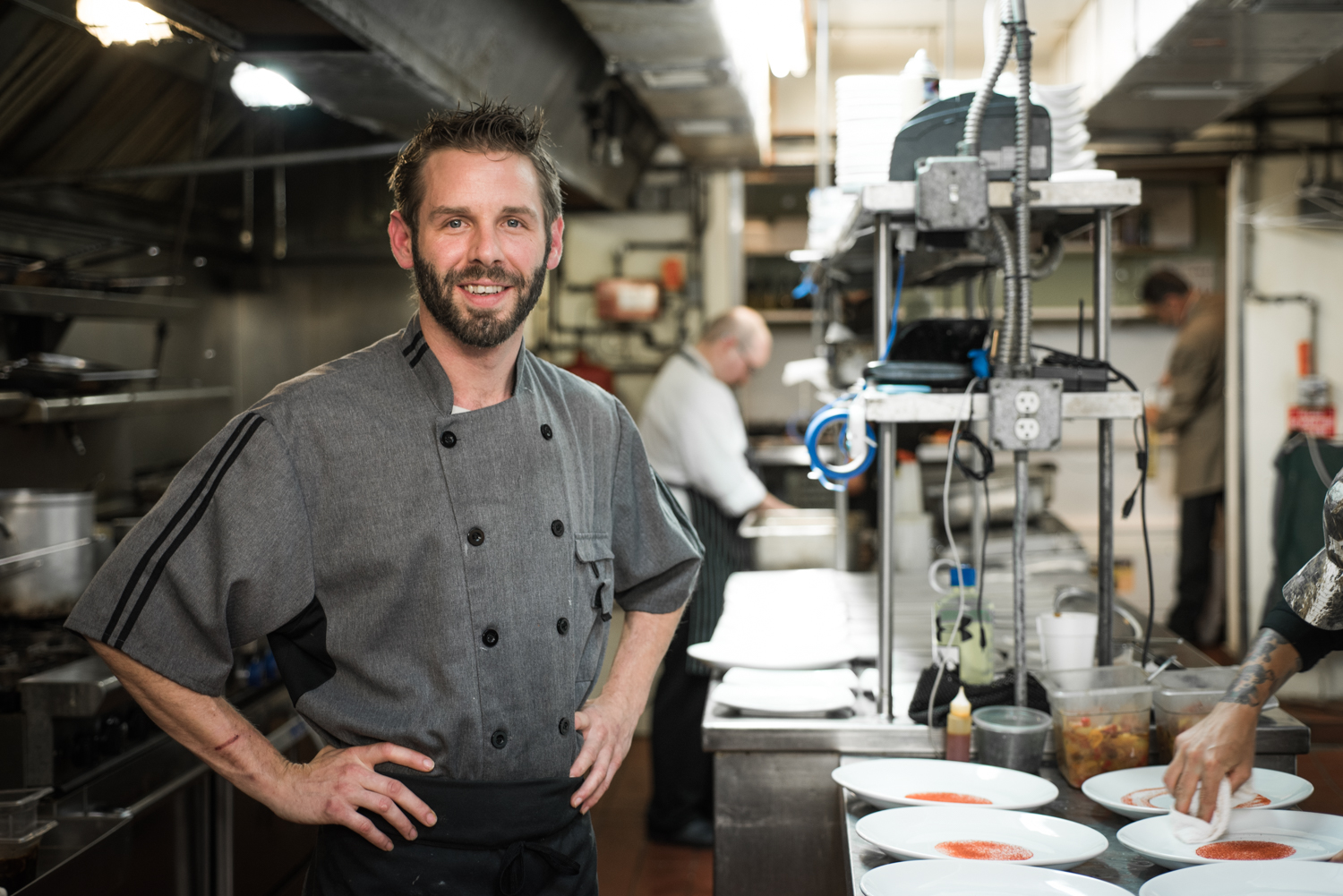
The chef’s mastery of flavor pairing reached its peak with locally sourced produce during dessert. Local honey was utilized in each component from the pound cake and cream cheese mousse, to the peach-strawberry compote, peach gelee and roasted Valencia almond and vanilla bean ice cream. “Talk about a limited engagement - this dessert can only be served when the seasons for Florida strawberries and peaches overlap,” said Brown. And, while it may only last for a couple of weeks, Chef Brown's sweet ending was definitely a sign that local bees have been busy.
Putting the spotlight on honey and pairing it with wine required careful consideration and experimentation with flavor combinations in the kitchen. As each dish took center stage on the plate, it was clear Chef Brown's extra efforts were worthwhile -- both for guests attending the wine dinner - and, for the bees that helped make it possible.
Interested in attending one of Blackfly's annual wine dinners? Visit their website for more information at www.blackflytherestaurant.com


